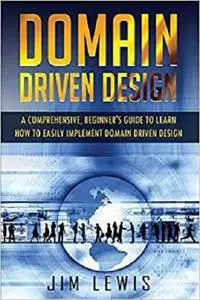DOMAIN DRIVEN DESIGN: A Comprehensive Beginner’s Guide to Learn How to Easily Implement Domain Driven Design by Jim Lewis
English | December 8, 2019 | ISBN: 1673274099 | 145 pages | Rar (PDF, AZW3) | 4.88 Mb
English | December 8, 2019 | ISBN: 1673274099 | 145 pages | Rar (PDF, AZW3) | 4.88 Mb
Let's address the critical question right off the bat: why do you have to read this book? If you have a knack for software development, please do not throw this opportunity away. Now is your chance to become an expert.When reliable approaches function without domain driven design, such denial of this technology or market environment become costly. Even medium-sized mobile apps benefit immensely from the structure of the application of this amazing architecture. Too often, developers only chuck lines of code at problems that can be fixed with vital structural changes.Domain-Driven Design does a great job in incorporating industry conditions into aspects of software development. For example, this book focuses on how the accuracy of the model driven design involves constant communication in multiple occasions, and developers separated by team/locations do not participate in continual contact. Recommendations are provided on segmenting the software as a consequence of the market reality. This will enable efficient modeling across independent teams. Such approaches also take political problems within groups into consideration, as well as the collaboration of overburdened departments and legacy systems. In fact, the book points out a claim that many developers are protesting against, but this is particularly true: not all developers in a group need to pursue the same approach.The claim does not mean that developers are expected to use arbitrary solutions; it implies that programmers are not allowed to tie each other to a unique solution if they can address fundamentally different problems. Two teams working on your device may have a "User" category and may have a Consumer Category. But perhaps Team A wants a customer as part of the payment process, or Team B needs a customer as part of a support system. Should we use all departments in the same Customer Class? Perhaps not. Perhaps they should have Consumer-Grade billing and support. Then each Consumer includes only the actions they need for the job they have to do. Nevertheless, you will find considerable resistance to solutions like this— critics are complaining of "unnecessary duplication," but in fact, it is not replication, and it is needed. Of similar reasons, the book tends to support the possibility of locking "Bounded Context."Furthermore, this beginner's guide is right on the money when it comes to structuring code in a manner that allows for business structure. The book also emphasizes concentration and project management in a sense that also helps teams to operate independently without the dictator and the design.



